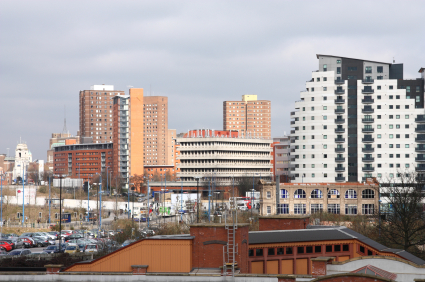 Birmingham has had a leading position as one of Europe’s largest and most important manufacturing centres for nearly two centuries. The role that this Midlands city played during the industrial revolution marked the future development of its population, economy, and industry. Following a series of regeneration projects, modern day Birmingham is at the forefront of socio-economic development in the United Kingdom. In this article we cover the demographic, economic, and industrial changes that the city has recently experienced.
Birmingham has had a leading position as one of Europe’s largest and most important manufacturing centres for nearly two centuries. The role that this Midlands city played during the industrial revolution marked the future development of its population, economy, and industry. Following a series of regeneration projects, modern day Birmingham is at the forefront of socio-economic development in the United Kingdom. In this article we cover the demographic, economic, and industrial changes that the city has recently experienced.
Demographic trends in Birmingham
With a total population of over 1 million and a population density of more than 10,000 people per square mile, Birmingham is the second most populous city in the UK. The city’s population reached the 1 million mark in 1951, although economic deprivation and rising unemployment levels forced many families to leave the city. However, the declining population trend has been recently reversed, and population growth has been a constant trend in Birmingham for over a decade. Since 2001, the local population has grown by 9.1 per cent, at an average rate of 0.9 per cent every year. There are three main factors that account for this trend: an increased birth rate, a lower number of deaths, and the number of migrants that have moved to the city.
Another important demographic trend refers to the increasing number of young people who live in the city, particularly those aged 20 to 24. Overall, Birmingham has a predominantly young population, with more than 46 per cent of all residents being under 30 years old, and the average age in the city being 36.1 years old. The number of residents aged 65 and above is smaller than the national average, as only 12.9 per cent of Birmingham’s population falls within this age group.
Birmingham has been known for its ethnic and cultural diversity since the post-war years, when large numbers of immigrants from Commonwealth countries in Asia and the Caribbean settled in the city. A second immigration wave took place in the 1980s, and again in 2004, when Eastern European countries joined the EU and thousands of migrants moved to the city, transforming its demographic make-up.
Population forecasts predict that by 2028 the local population will reach 1.17 million.
Recent economic data in Birmingham
Historically, Birmingham’s economy has relied heavily on manufacturing. While this sector is still important for the local economy, diversification and a strong focus on the service sector are the main characteristics of today’s economy in Birmingham.
Birmingham’s economy was badly affected by the economic crisis, which resulted in soaring unemployment levels and a marked decrease in economic output. However, the city council’s economic update for October 2013 shows that the local economy is finally on its way to recovery. The data show that unemployment rates went down to just over 45,000 (10 per cent lower than the previous year). Youth unemployment has also been decreasing and it currently stands at 18 per cent. Business activity in the private sector also rose significantly during 2013, which may account for the decrease in unemployment in the city.
As of August 2013, Birmingham had the seventh strongest performing economy of the United Kingdom’s 12 economic regions. There are more than 75,000 companies operating in the city and its metropolitan area, and more than 1,000 of those are large international corporations. The city’s economy continues to attract foreign investment, and in 2012 Birmingham was listed as the 7th European City of the Future in the fDi Intelligence report.
It is expected that the creation of 26 City Centre’s Enterprise Zones will bring a further £2.8 billion to the local economy and create nearly 40,000 new jobs.
Current industry trends in Birmingham
Birmingham’s industry is currently characterised by a strong focus on innovation, research and development, and high value industries like life sciences, clinical research, advanced engineering, digital media, and technology. Business services, such as banking, finance, insurance, and legal services are also important industrial contributors to the local economy, generating annual revenues for the value of £23 billion. Food and drink manufacturing is another high-growth industry in the city, having an annual turnover of £14 billion.
Some of the largest companies in the city are Deloitte, Birmingham City Council, Compass Group, GKN, the University of Birmingham, Deutsche Bank, Eversheds, Kraft/Cadbury, HJ Heinz, IBM, the BBC, and Cap Gemini.
The retail and tourism industries have recently gained importance in the city, and currently Birmingham’s visitor economy is worth nearly £5 billion. The city’s shopping centres attract more than 36 million visitors a year, and Birmingham is also a renowned international destination for business tourism thanks to its excellent transport links and conferencing facilities.

